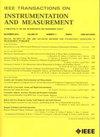Determination of Trap Distribution Based on Voltage Response Measurement for Condition Monitoring of Nuclear Power Plant I&C Cables
IF 5.6
2区 工程技术
Q1 ENGINEERING, ELECTRICAL & ELECTRONIC
IEEE Transactions on Instrumentation and Measurement
Pub Date : 2024-10-16
DOI:10.1109/TIM.2024.3481580
引用次数: 0
Abstract
The voltage response (VR) measurement was developed decades ago as a condition monitoring technique for oil-paper insulation of electrical equipment. Later, the improved version of the method, namely, the extended voltage response (EVR), was introduced as an efficient tool for determining the electrical model and the dielectric response of insulations. This article presents a new interpretation of the EVR measurement results, namely, the deduction of how the trap distribution could be determined from the measurement results and how the trap distribution provided by the method can be used as a potential condition indicator for nuclear cables. The proposed method was tested on gamma-irradiated and thermally aged ethylene-propylene rubber (EPR)-insulated instrumentation and control (I&C) cable samples. The shallow and deep traps around 0.76- and 0.86-eV energy depth were identified, and the trap densities showed an increasing trend with aging time for irradiation and thermal aging. The results were compared with elongation at break (EaB) data, the most generally accepted condition indicator for polymeric cable components in the nuclear industry. Since a strong correlation between the EaB and deep trap density was shown, regression curves were calculated. In addition, based on the regression curves, threshold trap density values were determined for 25% of the remaining lifetime. The results revealed that the deep trap density can be a reliable condition indicator for nuclear power plant (NPP) cables.基于电压响应测量确定陷波器分布,用于核电站 I&C 电缆状态监测
电压响应(VR)测量法是几十年前开发的一种电气设备油纸绝缘状态监测技术。后来,该方法的改进版,即扩展电压响应(EVR)被引入,成为确定绝缘的电气模型和介电响应的有效工具。本文提出了对 EVR 测量结果的新解释,即如何从测量结果中确定陷波分布,以及如何将该方法提供的陷波分布用作核电缆的电位条件指标。在经过伽马射线辐照和热老化的乙丙橡胶(EPR)绝缘仪表和控制(I&C)电缆样品上测试了所提出的方法。确定了 0.76 和 0.86-eV 能量深度附近的浅陷阱和深陷阱,辐照和热老化的陷阱密度随老化时间呈上升趋势。研究结果与断裂伸长率(EaB)数据进行了比较,断裂伸长率是核工业中聚合物电缆元件最普遍接受的状态指标。由于断裂伸长率与深阱密度之间存在很强的相关性,因此计算了回归曲线。此外,还根据回归曲线确定了剩余寿命中 25% 的陷阱密度阈值。结果表明,深陷阱密度可以作为核电站(NPP)电缆的可靠状态指标。
本文章由计算机程序翻译,如有差异,请以英文原文为准。
求助全文
约1分钟内获得全文
求助全文
来源期刊

IEEE Transactions on Instrumentation and Measurement
工程技术-工程:电子与电气
CiteScore
9.00
自引率
23.20%
发文量
1294
审稿时长
3.9 months
期刊介绍:
Papers are sought that address innovative solutions to the development and use of electrical and electronic instruments and equipment to measure, monitor and/or record physical phenomena for the purpose of advancing measurement science, methods, functionality and applications. The scope of these papers may encompass: (1) theory, methodology, and practice of measurement; (2) design, development and evaluation of instrumentation and measurement systems and components used in generating, acquiring, conditioning and processing signals; (3) analysis, representation, display, and preservation of the information obtained from a set of measurements; and (4) scientific and technical support to establishment and maintenance of technical standards in the field of Instrumentation and Measurement.
 求助内容:
求助内容: 应助结果提醒方式:
应助结果提醒方式:


